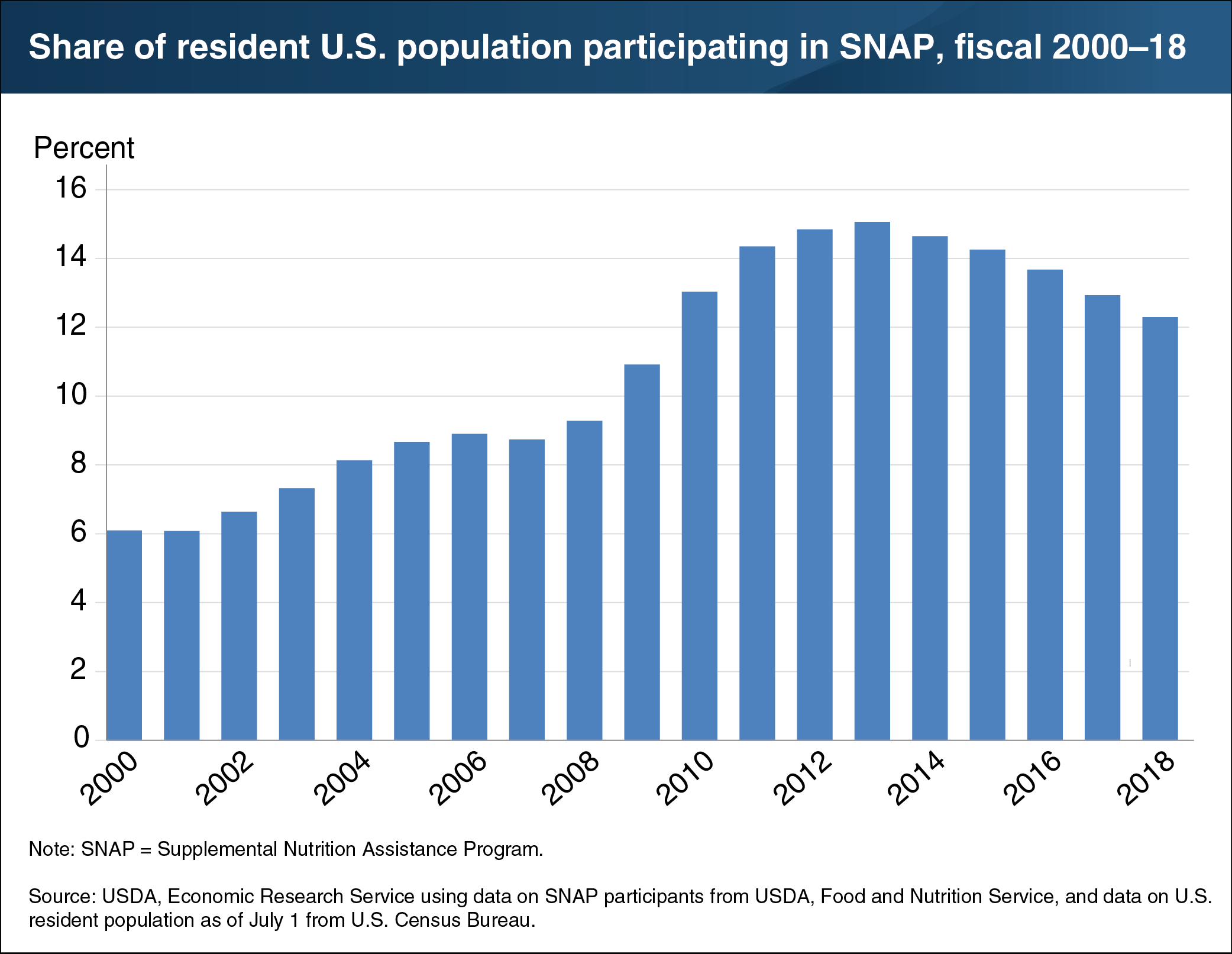Slightly over 12 percent of U.S. residents participated in SNAP in 2018
- by Victor Oliveira and Xinzhe Cheng
- 6/4/2019

USDA’s Supplemental Nutrition Assistance Program (SNAP) is the Nation’s largest food assistance program. In an average month in fiscal 2018, 40.3 million people—about 12 percent of the Nation’s population—participated in the program, receiving benefits averaging $125.25 per person per month. The share of the Nation’s population participating in SNAP grew from 6 percent in 2000 to approximately 9 percent in 2007, and then increased more sharply to just under 11 percent in 2009 as economic conditions deteriorated during the Great Recession, which officially lasted from December 2007 to June 2009. The share of the population receiving SNAP benefits continued to rise as labor market conditions in low-wage occupations remained weak and poverty rates remained high after the Great Recession’s official end. Policies to increase program access and temporarily increase benefit levels also likely encouraged eligible people to enroll in SNAP. By 2013, 15 percent of the U.S. population participated in the program each month. From 2014 to 2018, the share of the population enrolled in SNAP fell each year as economic conditions improved. This chart appears in the ERS report, The Food Assistance Landscape: FY 2018 Annual Report, April 2019.

